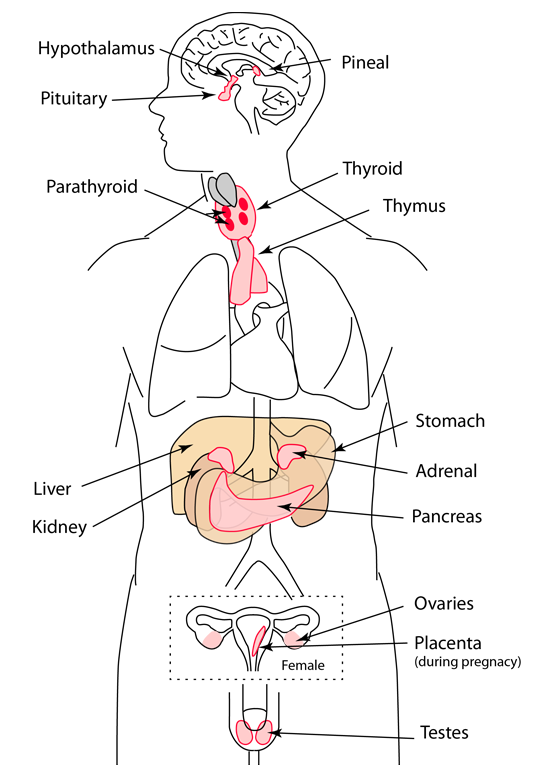The Endocrine System
The endocrine system and the nervous system can be viewed as the large-scale communication systems of the body. The nervous system works with electrical impulses called action potentials and transmitts information very rapidly along the pathways of nerve fibers, but it does not directly reach each cell. The endocrine system is composed of the glands of the body that secrete hormones to be carried by the blood to essentially every cell. This communication system is slower than the nerve communication, but more pervasive. The nerve communication might be likened to email, while the endocrine communication is more like postal service. It is slower, but reaches essentially every home.

The main source of the hormones which carry out the functions of the endocrine system are the organs or glands highlighted in the diagram above. There are additional sources of hormones distributed throughout the body. Prostaglandins are produced from membrane phospholipids by many types of cells. Some prostaglandins cause inflammation and cause pain, as in arthritic joints - drugs such as aspirin and ibuprofen inhibit the formation of these prostaglandins and can provide relief. Other prostaglandins work along with oxytocin from the pituitary to stimulate uterine contractions in childbirth. The variety of prostaglandins is a subject of current study.
Organs such as the kidney (erythropoietin, renin, angiotensin), intestine (gastrin, secretin, cholecystokinin), and even the heart (atrial natriuretic peptide (ANP)) produce specialized hormones.
| This material is part of a brief overview of the topics studied in biology with the intent to highlight the connections to basic ideas in physics and physical science. |
Reference
Audesirk & Audesirk
Ch 32
Thibodeau & Patton
Ch 16
| HyperPhysics***** Biology | R Nave |